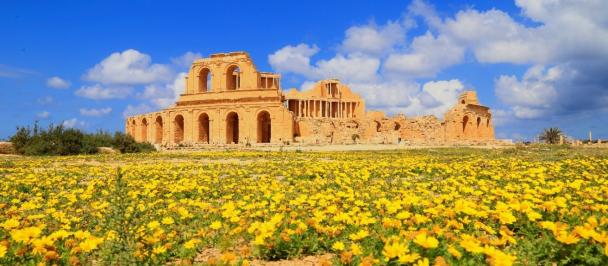Crossing Egypt: Migratory birds fly home safely this season
May 14, 2023

A beautiful scenery in Egypt…a windy day, moving the trees' leaves and the sound of the windmills rotating.
The wind turbines are turned off. Everything is silent, getting ready for the awaited moment.
Something fascinating happened a few seconds later, with thousands entering Egypt's sky...The migratory soaring birds have arrived.
The Rift Valley/Red Sea flyway is the second most important flyway for migratory soaring birds (raptors, storks, pelicans, and some ibis) in the world, with over 2 million birds of 37 species, including five globally threatened species, using this corridor between their breeding grounds in Europe and West Asia and wintering areas in Africa each year.
Egypt occupies an important position due to its geographical location as a bridge between the continents of the world, which made some of its geographical area’s critical paths during the birds’ migration.
The country’s plans are to produce 42% of the country's energy through renewable sources by 2035. Although there is an increasing demand to use renewable energy, some of Egypt's most promising wind energy regions coincide with migratory bottlenecks and corridors, so development must proceed with care.
But the question has been how to generate clean energy while protecting millions of migratory soaring birds and their ecosystem?
In 2017, Egypt has put a plan to protect the birds' route through the “Migratory Soaring Birds” project (MSB), which is implemented by the Ministry of Environment in Egypt, UNDP and BirdLife International, with the support of the Global Environment Facility.
The project led the implementation of precautionary measures including applying the shutdown on demand (SOD) programme and bird monitoring migration flyways during each year's spring and autumn seasons, determining the appropriate procedure for located turbines.
This technique was chosen as the best way to conserve the flyway, which involves temporarily closing all or some of the wind turbines. This work required qualified staff, establishing a centre of excellence to build national and regional capacities.
To date, the MSB project has also succeeded in involving 150 women to attend the training programmes on bird identification and classification, as well as the SOD programme, including 90 university students and 60 from the local community of Ras Ghareb city, of which 15 have already joined the work as bird observers in the wind energy farms.
“The MSB project with key partners provides safe flyway for migratory soaring birds by taking creative mitigation actions like shut down on demand in the Red Sea flyway, developing innovative solutions for ensuring financial sustainability, creating green jobs, empowering women for new environmental career and addressing climate, biodiversity, and gender together,” highlighted Osama El Gebally, the MSB project manager.
By implementing this technique, the country has reduced its total energy loss from 9% to 0.03% a year during the five years of the project. This was reflected in saving 8.97 % of the total energy generated from using the old techniques of a fixed shutdown, where the project has used the SOD programme’s advanced radar technology.
Additionally, this programme helped reduce greenhouse gas emissions of CO2 from 1,092 MW operated projects with approximately 3.3 million tons.
With the significant expansion of wind energy projects by private sector companies, the MSB project signed an official MOU with the New & Renewable Energy Authority, the Egyptian Environmental Affairs Agency, the Egyptian Electricity Transmission Company (EETC), and the Regional Center for Renewable Energy and Energy Efficiency (RCREEE) to ensure the inclusion of a binding article in contracts with private sector companies to allocate EUR 1,000/megawatt to be generated from wind energy to support the implementation of precautionary measures to preserve birds.
While shutting down windmills may seem like the only way to protect birds in danger, efforts to protect migratory birds is a lot more complex than that. Efforts are also to protect a flyway including raising awareness of migratory soaring birds’ importance to the ecosystem, protecting them from hunting and all forms of disturbance to the flyway.

 Locations
Locations
